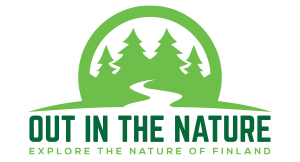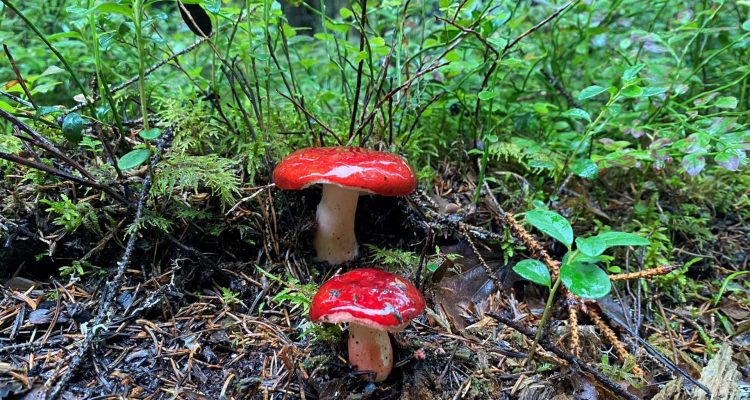Brittlegills are large and colorful mushrooms, a real treat for the eyes in mushroom forest. When you come across red, yellow, and orange mushrooms with white stems, they are often brittlegills. Brittlegills, also commonly known as russulas, grow in Finland from July to September. They can be best found in pine forests or near swamps.
How to identify brittlegills?
Their distinguishing characteristics include usually brightly colored caps, a white to dark yellow spore print, and brittle, attached gills. Genus Lactarius has similar characteristics but emits a milky latex when their gills are broken. Russulas don’t do that.
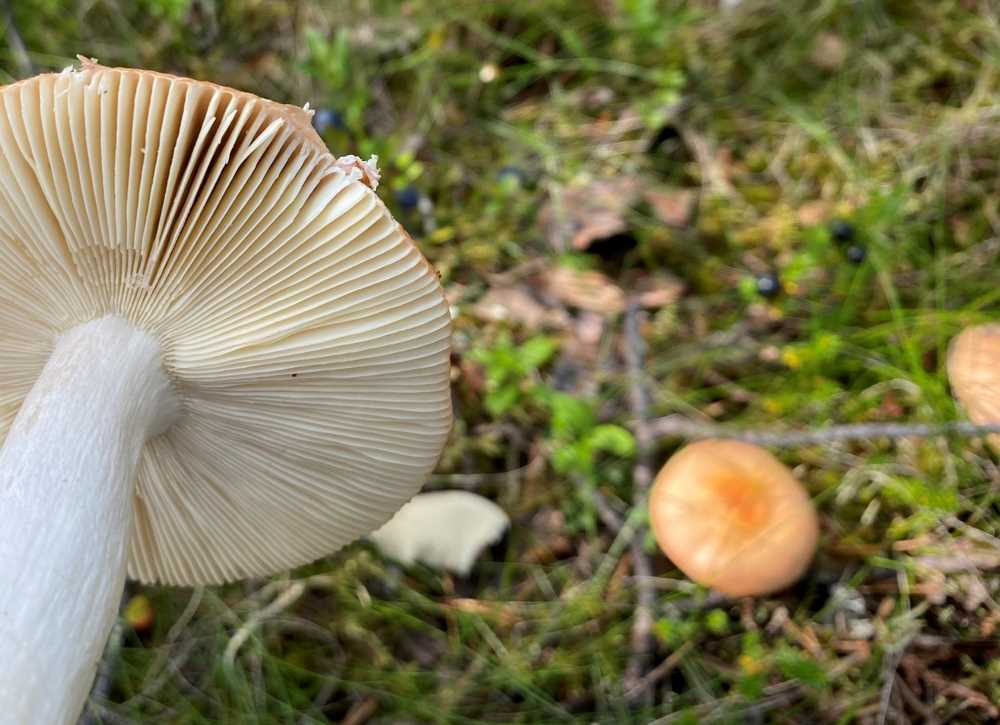
While it is quite easy to tell they are russulas, identifying them from each can be a bit tricky simply because there are so many of them and they might also vary in color. Location, nearby trees, smell, and taste are all needed in addition to color of cap and stem and color changes when identifying them. Worldwide there are about 750 different brittlegills. In Finland, there are about 130 distinct species that are known, but there could be much more. And I thought I was doing well when I learned to identify my third brittlegill!
Are brittlegills poisonous?
There are no poisonous brittlegills in Finland, but not all of them are edible. The mild and edible brittlegills can be identified by tasting them raw (without swallowing).
Important reminder: Do not eat any mushrooms that you cannot identify with 100% certainty. We take no responsibility for damage caused by wrong identification or preparation. Our mushroom posts only serve as inspiration and should not be used for identification. If you are beginner with mushrooms, it is best to ask someone to confirm your mushroom identification in real life. You cannot identify them by picture only.
Few examples of colorful brittlegills in Finland
Yellow swamp brittlegill (Russula claroflava)
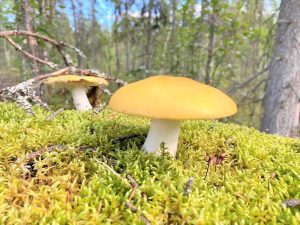
Let’s begin with my favourite, yellow swamp russula, keltahapero, that likes to grow near birch trees. It’s a bright yellow mushroom that is mild and nutty, and so easy on the stomach that you could eat it raw. All parts turn grey on aging or bruising. It can be mistaken with Russula ochroleuca, sinappihapero, which only grows in Southern Finland and is inedible due to very acidic flavor, or its smaller brother Russula vitellina, munahapero, which is also good mushroom to eat and might smell lightly like egg-yolk.
Yellow swamp brittlegill salad
- 5-6 dl yellow swamp brittlegill
- 1 pickled cucumber
- 1/2 fresh cucumber
- 1/2 apple
- 2 dl sour cream (Nordic kind)
- 1 tsp mustard (preferably Dijon)
- chives
- salt and pepper to taste
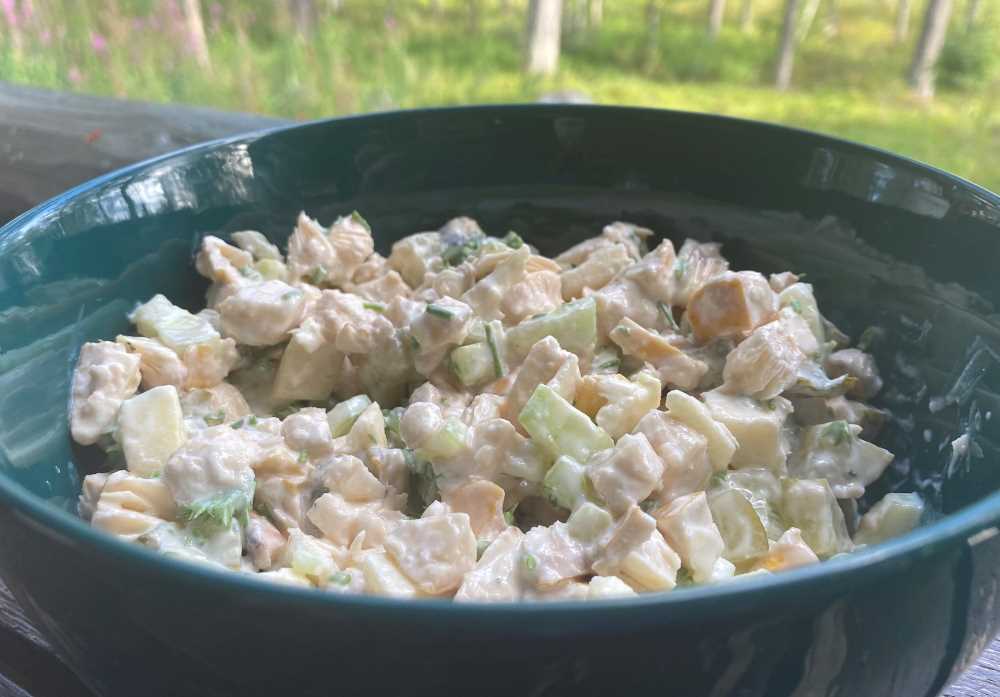
This salad was inspired by Kivistössä -blog. Please note, that this beautiful salad turns grey after a while, since the yellow swamp brittlegill turns grey when cut. Serve it fresh!
Darkening brittlegill (Russula vinosa)
Darkening brittlegill, viinihapero, is quite common in Finland and good mushroom to eat. It is brown purple or dark burgundy with cream-colored gills. The stem is white. When you cut the mushroom, it first gets red and then grey. It is common in all Nordic countries, and it is usually harvested even in slightly worse mushroom years.
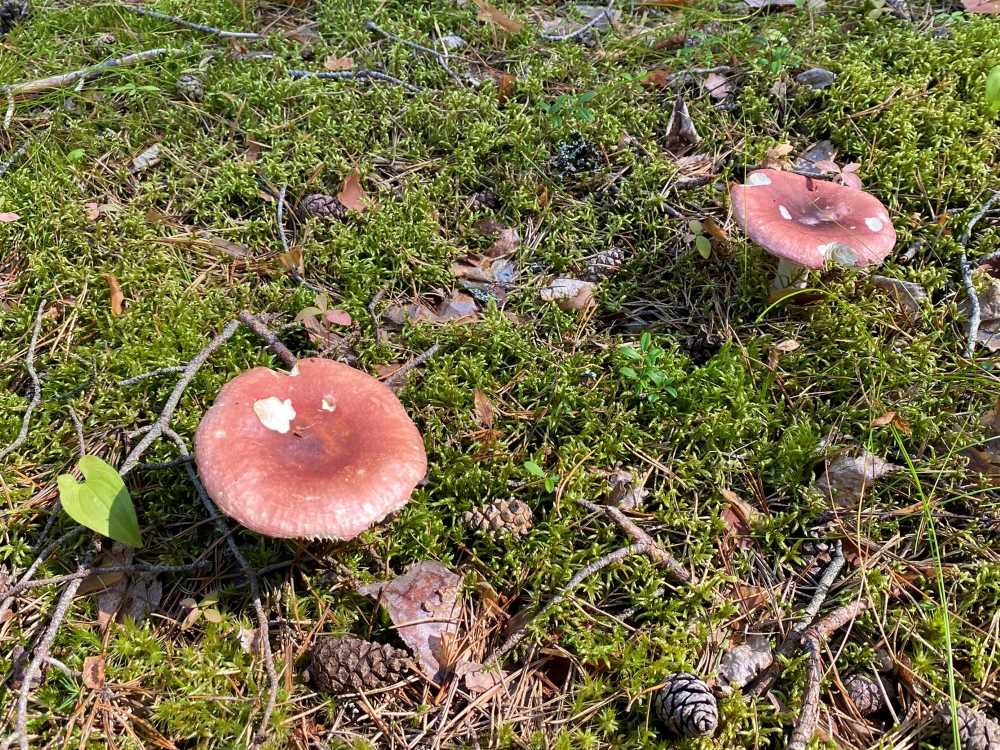
Copper brittlegill (Russula decolorans)
Copper brittlegill, kangashapero, is commonly harvested for food in Finland. It has a dull orange to coppery orange cap, and its flesh and stem bruise and discolor gray. It has a mild flavor but could also be a bit tart. It is therefore recommended to be cooked before eating. Brittlegills can be dried, but the ones that discolor grey, might not be that appetizing when dried.
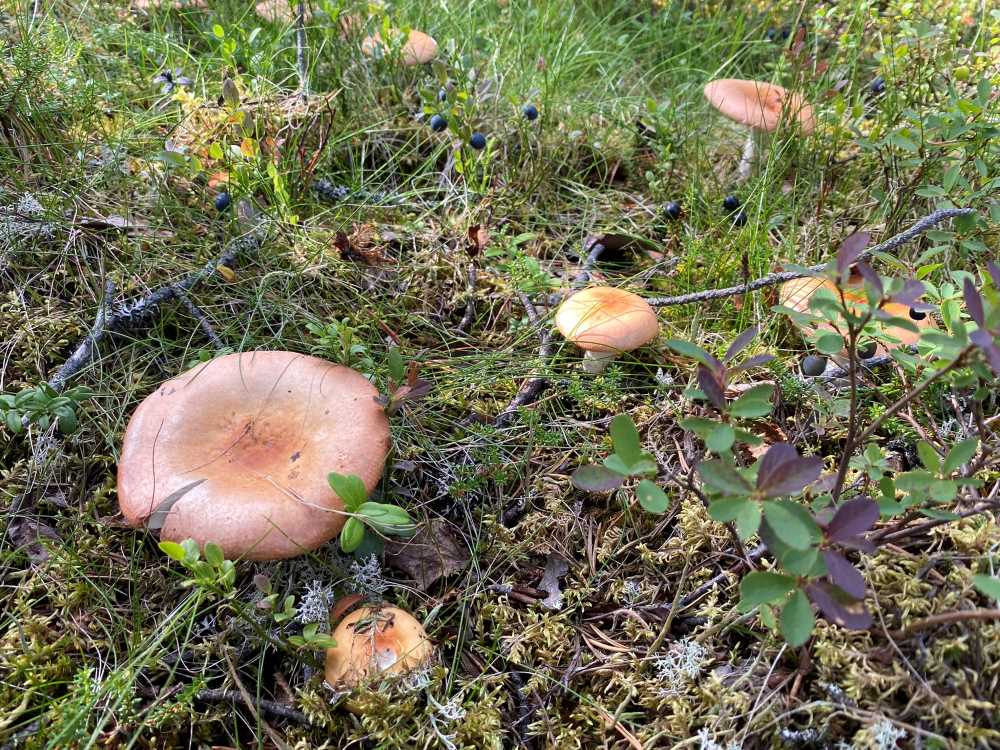
Tall bog russula (Russula paludosa)
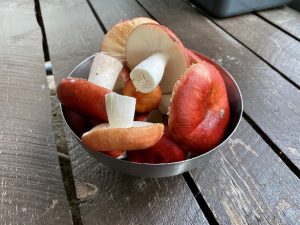
Tall bog russula, Russula paludosa, isohapero, has gorgeous red cap and white stem with a hint of pink. The cap can turn lighter or yellowish from the middle as they get older. Interestingly, the color of the cap can also become lighter when it rains. The red color also dissolves into water when cooked, so it can dye your food pink. One good sign to identify this mushroom is that tall bog russula remains white when you cut it, it doesn’t change color. It also has a mild taste. These russulas can very easily be mistaken with Russula emetica, tulipunahapero. That one has a white stem without any pink. It is also known as the sickener, which should tell you something. Russula Rhodopus looks similar, but it has more than a dash of pink in its stem. In Finnish, that one is known as punajalkahapero. There are several more russulas with red caps, about 50 in total, so it’s easy to get confused.
I would like to give a special mention to Russula suecica, jussinhapero. Just because its name in Finnish is cool. Nothing more I can tell you about that.
One kind reminder also about fly agaric, Amanita muscaria, punakärpässieni. It is a poisonous mushroom with a white stem and red round cap. Usually, it can be identified by white dots on its cap. On a very rainy summer those white dots might disappear and then it could be mixed with red brittlegills.
Do you like to forage brittlegills? What is your favorite one?
Read more about mushrooms in Finland
- Watch out for the deadliest mushrooms in Finland
- Foraging for the most common mushrooms in Finland
- Mushroom picking in Finland is fun
- How to identify edible boletes in Finland
- How to identify different milkcaps in Finland
- How to tell chanterelle and false chanterelle apart
- What is the difference between true morels and false morels?
- Out in the Nature Quiz – How well do you know Finnish mushrooms?
- Out in the Nature Quiz – Another fun mushroom quiz
